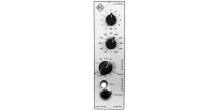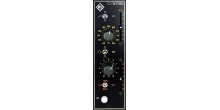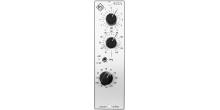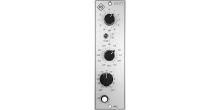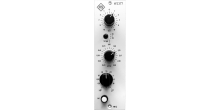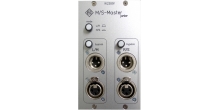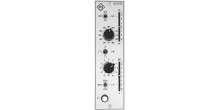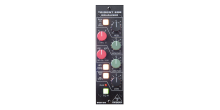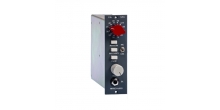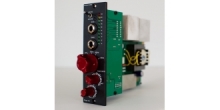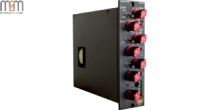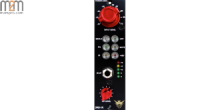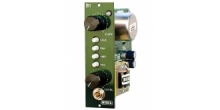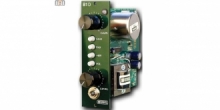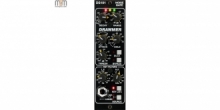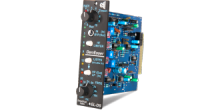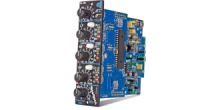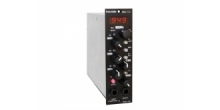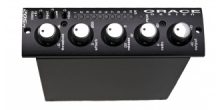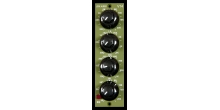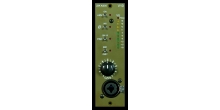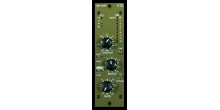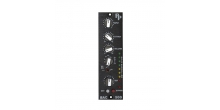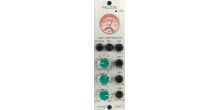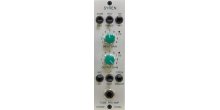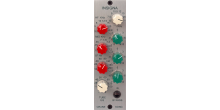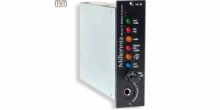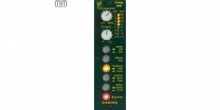| Input Impedance | 10 kilohms |
| Max Input | +27dBu |
| Max Output | +27dbu (Into 600ohms) |
| Distortion | (+10dBu Out) 0.0031% (20Hz to 20kHz) (Hi Enabled Max Freq) (Lo Enabled Min Freq) |
| Distortion | (+20dBu Out) 0.0069% (20Hz to 20kHz) |
| Frequency Response | 15Hz to 60kHz (-3dB) |
| Noise | (20Hz to 20kHz bandwidth limited) No Filters in circuit (Residual Noise) -95dBu |
| High Cut Enabled | Freq Max -83.5dBu Freq Min -90dBu Freq Max – 24dB/Oct Slope Enabled -80dBu Freq Min – 24dB/Oct Slope Enabled -90dBu Freq Max – Res Enabled, Resonance Min -83.5dBu Freq Max – Res Enabled, Resonance Max -72dBu Freq Max – 24dB, Res Enabled, Res Max -71dBu Freq Min – Res Enabled, Resonance Min -90dBu Freq Min – Res Enabled, Resonance Max -90dBu Freq Min – 24dB, Res Enabled, Res Max – 90dBu |
| Low Cut Enabled | Freq Max -83dBu Freq Min -86dBu Freq Max – 24dB/Oct Slope Enabled -83dBu Freq Min – 24dB/Oct Slope Enabled -90dBu Freq Max – Res Enabled, Resonance Min -84dBu Freq Max – Res Enabled, Resonance Max -72dBu Freq Max – 24dB, Res Enabled, Res Max -73dBu |
TRIDFUZ1OK
Nouveau
TRIDENT - Hi-Lo 500 Tracking Filters

Hi-Lo Dynamic Filtering.
The Hi-Lo is not just a filter. Trident Audio has created an analog adaptive filtering circuit for the 500 Series format.
The Trident Hi-Lo, an adaptive Hi-Cut/Lo-Cut frequency filtering module that responds dynamically to program material, providing a high degree of control and signal enhancement, unavailable in any modern-day 500 series package.
The Hi-Cut This is a sweepable low pass filter with unity gain in the selected passband and a selectable (12dB per octave or 24dB per octave) roll-off outside the passband. The cutoff frequency can be set from 75Hz to 24kHz.
In addition, a RESONANCE control can be switched into circuit, to introduce a resonant peak at the selected cutoff frequency. The size of this peak, which is dependant on the elected frequency selected on the front panel, can be varied from zero to approximately +12dB. At maximum setting, RESONANCE stops just short of self-oscillation.
A HI-CUT ENABLE switch allows each individual frequency band or filter to be assessed, while a red PEAK warning indicator will illuminate at approximately +16dBu, approximately 12dBu below clipping. To allow adequate headroom, avoid boosting the signal by more than an amount which just causes this LED to flash on occasional peaks.
Hi-Cut Dynamic Tracking

Using the TRACK SIGNAL function enables the Hi-Cut filter to be used for dynamic noise reduction. This is a technique that relies on the psychoacoustic effect of ‘masking’, in which a louder signal will cover up a quieter signal of the same frequency. In this mode, the cutoff frequency tracks dynamically the high frequency content of the music, with the FREQUENCY control setting the frequency to which the filter will close down in the absence of any high-frequency content.
With a noisy signal applied (e.g. from analog tape or other material with a high background noise content), start with the FREQUENCY control at maximum (fully clockwise) and back off the control until the noise just disappears.
Use of higher resonant settings will result in the movement of the filter becoming audible and indeed, combined with the lower settings of the FREQUENCY control, this can be the basis of some unique special effects.
Further possibilities The sweep range of the Hi-Cut filter is extremely wide, from effectively subsonic, right up to full audible bandwidth. This suggests the possibility of fading tracks in and out, not in the amplitude domain as is usual, but in the frequency domain.
The Lo-Cut This is a sweepable high pass filter with unity gain in the selected passband and selectable (12dB per octave or 24dB per octave) roll-off outside of the passband. The cutoff frequency can be set manually, anywhere from 15Hz to 16kHz.
In addition, a RESONANCE control can be switched into the circuit, to introduce a resonant peak at the selected cutoff frequency. The size of this peak, which is dependant on the elected frequency selected on the front panel, can be varied from zero to approximately +12dB. At maximum setting, RESONANCE stops just short of self-oscillation.
A LOW-CUT ENABLE switch allows each individual frequency band or filter to be assessed, while a red PEAK warning indicator will illuminate at approximately +16dBu, approximately 12dBu below clip-ping. To allow adequate headroom, avoid boosting the signal by more than an amount which just causes this LED to flash on occasional peaks.
Lo-Cut Dynamic Tracking

Using the TRACK SIGNAL function, enables the Lo-Cut filter to be used for a dynamic hum or rumble reduction. This is a technique that relies on the psychoacoustic effect of ‘masking’, in which a louder signal will cover up a quieter signal of the same frequency. In this mode, the cut-off frequency tracks dynamically the low frequency content of the music, with the FREQUENCY control setting the frequency to which the filter will open up in the absence of any low-frequency content.
With a noisy signal applied (e.g. from a record deck or other material with a high background noise content), start with the FREQUENCY control at minimum (fully anticlockwise) and advance the control until the hum or rumble just disappears.
In practice, this technique demands a trade-off between noise reduction and loss of some low-frequency content of the program material. However, using the steepest (24dB per octave) slope maximizes the amount of low-frequency content retained. In addition, discreet use
of the RESONANCE control to introduce a small peak of a few dB at the cutoff frequency can psychoacoustically enhance the apparent bandwidth of the filtered signal. Use of higher resonant settings will result in the movement of the filter becoming audible and indeed, combined with higher settings of the FREQUENCY control, this can be the basis of some unique effects.
Further possibilities The sweep range of the Lo-Cut filter is extremely wide, from effectively ultrasonic to right down to full audio bandwidth. This suggests the possibility of fading tracks in and out, not in the amplitude domain as usual, but in the frequency domain.
Hi-Lo Peak Indicators The Trident Hi-Lo includes LED peak indicators on the outputs of both the Hi-Cut filter section and the Lo-Cut filter section. Since the filters are in series (the Hi-Cut circuitry before the Lo-Cut), the Hi-Cut Peak LED monitors the Hi-Cut filter stage only, and the Lo-Cut Peak LED monitors to signal thru both stages, and as such, the output of the unit. This gives the most flexibility for clip monitoring in the unit. The Output of the Hi-Lo can drive approximately 27.5 dB into a 600 Ohm load. The clip levels are approximately 12 dB below the actual signal Clip (so we have this occur at +16dBu) and allow for tweaks in resonance which may exceed that but allow for headroom after the clip indicator has just reached active. It should also be noted, that if neither the Hi-Cut or Lo-Cut switches are enabled, the peak LED indicators are actively monitoring the incoming signal level. Dynamic Linking Linked Stereo Tracking The Trident Hi-Lo module also offers the option of linked stereo tracking when paired with a second Trident Hi-Lo module. Ordinarily, most 500 Series racks offer paired slots by default. The Trident Hi-Lo provides an on-board stereo link switch (S9) for use in this instance. With both modules, stereo link switches selected to on, and the modules fitted in the pre-paired slots, the modules are now paired together. By enabling both Hi-Lo modules TRACK SIGNAL switches, and setting the FREQUENCY controls to identical positions, the left and right signals are now summed together, and the automatic tracking follows both the left and right signal sources. When using a 500 Series rack with selectable stereo pairing on the rear of the rack, such as with the Trident Deca-Dent, by releasing the on-board stereo link switches, both modules can be used as separate mono units without the need to access the rear of the rack.
API Radial Workhorse An onboard jumper is available for use when the Trident Hi-Lo is used in conjunction with the API Radial Workhorse. When selected, this allows the Hi-Lo to send its output to the Workhorse mix bus (pin 11), which is fed to the Workhorse mixer section. This can be used in conjunction with the on-board stereo link switch, thus enabling stereo use on the Workhorse.
Up to 48dB Per Octave Slope (Wired In Series) When two Hi-Lo modules are connected in series, slopes of 12, 24, 36, and 48dB can be achieved, in any combination, by selecting the appropriate SLOPE buttons on the front of each Hi-Lo module. For example, by engaging both of the Hi-Lo modules Hi-Cut filters, and setting both modules to 24dB slope, the program material will be subject to a 48dB slope. By adjusting one of the Hi-Cut filters to 12dB, the program material will be subject to a 36dB slope. The introduction of a third Hi-Lo in series with the first two Hi-Lo modules, would provide for yet steeper slopes, again in increments of 12dB. If fact, because they can be connected in series, you’re only limited by the number of Hi-Lo’s that you have to hand.
Features And Specs
| Input Impedance | 10 kilohms |
| Max Input | +27dBu |
| Max Output | +27dbu (Into 600ohms) |
| Distortion | (+10dBu Out) 0.0031% (20Hz to 20kHz) (Hi Enabled Max Freq) (Lo Enabled Min Freq) |
| Distortion | (+20dBu Out) 0.0069% (20Hz to 20kHz) |
| Frequency Response | 15Hz to 60kHz (-3dB) |
| Noise | (20Hz to 20kHz bandwidth limited) No Filters in circuit (Residual Noise) -95dBu |
| High Cut Enabled | Freq Max -83.5dBu Freq Min -90dBu Freq Max – 24dB/Oct Slope Enabled -80dBu Freq Min – 24dB/Oct Slope Enabled -90dBu Freq Max – Res Enabled, Resonance Min -83.5dBu Freq Max – Res Enabled, Resonance Max -72dBu Freq Max – 24dB, Res Enabled, Res Max -71dBu Freq Min – Res Enabled, Resonance Min -90dBu Freq Min – Res Enabled, Resonance Max -90dBu Freq Min – 24dB, Res Enabled, Res Max – 90dBu |
| Low Cut Enabled | Freq Max -83dBu Freq Min -86dBu Freq Max – 24dB/Oct Slope Enabled -83dBu Freq Min – 24dB/Oct Slope Enabled -90dBu Freq Max – Res Enabled, Resonance Min -84dBu Freq Max – Res Enabled, Resonance Max -72dBu Freq Max – 24dB, Res Enabled, Res Max -73dBu |
| Type de matériel | Egaliseurs |




